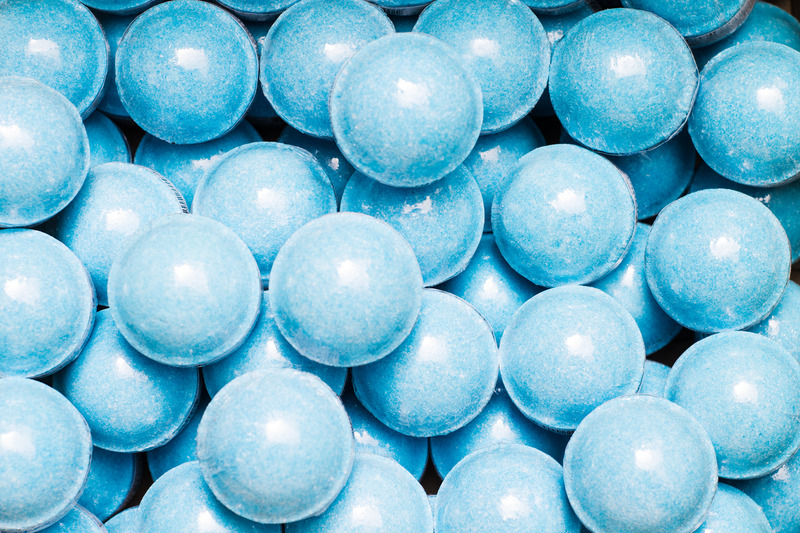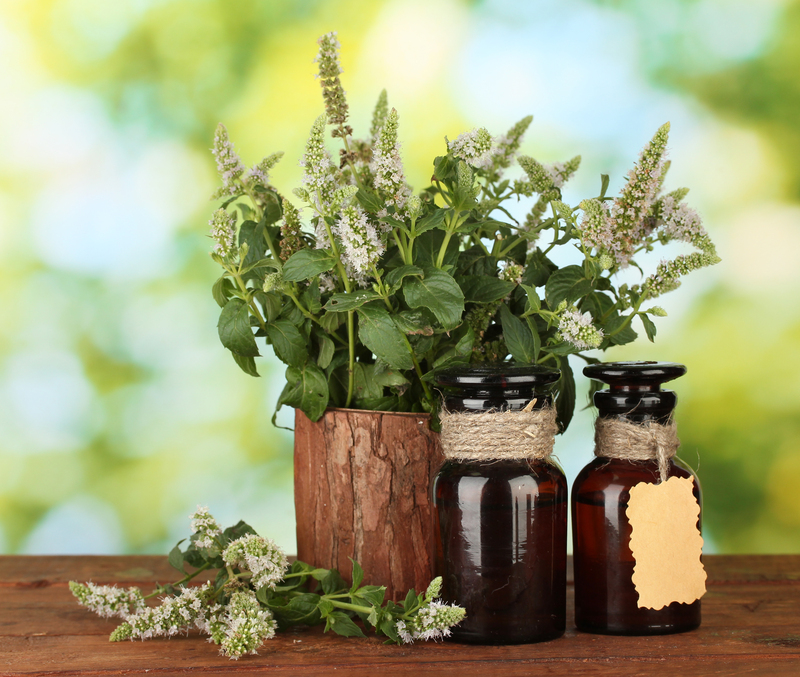Step-by-Step Tips for Cleaning Mouldy Window Sills
Posted on 12/09/2025
Step-by-Step Tips for Cleaning Mouldy Window Sills
Mouldy window sills are a common problem in many homes, especially those with high humidity or poor ventilation. While the sight of black, green, or brown spots on your window frames can be alarming, cleaning mould from window sills is achievable with the right approach. Not only does removing mould improve the appearance of your home, but it also safeguards the health of your family by reducing allergies and respiratory issues.
If you're searching for step-by-step tips for cleaning mouldy window sills, this comprehensive guide will walk you through everything you need to know, from identifying mould to choosing cleaning solutions and implementing preventative measures. Let's get started!
Why Do Mouldy Window Sills Occur?
Understanding what causes mould growth on window sills is the first step to effective mould removal. Mould thrives in moist, warm environments and feeds on organic materials such as dust, wood, or paint. Some common causes include:
- Poor ventilation: Lack of fresh air circulation traps humidity inside your home.
- Condensation: Significant temperature differences between indoors and outdoors increase moisture build-up on windows, creating ideal growing conditions for mould.
- Leaky windows: Broken seals or cracks may allow rainwater to intrude and keep the area damp.
- Organic debris: Dust, dirt, and dead insects provide food for mould spores.
By addressing these causes, you'll be better prepared to eliminate window sill mould permanently.

How to Identify Mould on Window Sills
Before you begin cleaning, it's essential to confirm the presence of mould and assess its severity. Mould can appear as:
- Black spots - most common type, especially on painted or wooden sills.
- Green or brown stains - can indicate different mould species or even algae.
- Musty odour - even if not visually prominent, a distinctive earthy smell often points to hidden mould.
Warning: If you notice extensive growth (greater than 1 square meter), severe rot, or health symptoms after exposure, consider calling professional mould remediation services.
Essential Precautions and Cleaning Supplies
Before you start scrubbing away, safety comes first. Mould spores can be harmful when inhaled or when they come into contact with skin or eyes. Take these precautions:
- Wear protective equipment: Gloves, safety goggles, and a mask (preferably an N95 respirator).
- Ventilate the area: Open windows and doors to allow fresh air to circulate while cleaning.
- Avoid dry brushing: Wet the mould first to limit dispersing spores into the air.
Gather the following cleaning supplies for mouldy window sills:
- Spray bottle
- Mild detergent or dish soap
- White vinegar or hydrogen peroxide
- Baking soda (for tough stains)
- Water
- Soft-bristled brush or old toothbrush
- Microfiber cloths or sponges
- Paper towels or disposable cleaning rags
Step-by-Step Guide to Cleaning Mouldy Window Sills
Step 1: Prepare the Area
- Clear the window sill of plants, decor, or curtains.
- Lay down newspaper or old towels to protect the floor and furniture from spills or drips.
Step 2: Mix Your Cleaning Solution
- For most cases, white vinegar is highly effective. Fill a spray bottle with undiluted white vinegar.
- If you prefer, mix a solution of 1 part hydrogen peroxide to 2 parts water as an alternative.
- For light mould, mild dish soap and warm water can also work.
Step 3: Apply the Solution Generously
- Spray the affected area thoroughly with your chosen cleaning solution, ensuring all mouldy spots are soaked.
- Allow it to sit for at least 10-15 minutes. This dwell time helps break down the mould and makes removal easier.
Step 4: Scrub the Mould Away
- Using your soft brush or toothbrush, gently scrub the window sill to lift away mould and stains. Work in a circular motion.
- If the mould is stubborn, sprinkle some baking soda onto your brush before scrubbing. This adds a mild abrasive for tougher stains.
- For cracks or crevices, try using a cotton swab or old toothbrush to get into small spaces.
Step 5: Rinse and Wipe Clean
- Dampen a microfiber cloth with clean water and wipe down the area thoroughly to remove any residual cleaner and loosened mould.
- Repeat rinsing if needed, changing the cloth or using a fresh section to avoid spreading spores.
Step 6: Dry the Window Sill Completely
- Mould flourishes in moisture, so it's crucial to dry the sill completely post-cleaning. Use a dry, clean towel or allow the area to air dry with plenty of sunlight and fresh air if possible.
- Do not replace any items (like plants or cushions) until the area is fully dry.
Step 7: Repeat if Necessary
- Some stains may require a second round of treatment. Don't hesitate to repeat the process if any mould remains after the first cleaning.
Natural vs. Chemical Cleaners
When tackling mould remediation on window sills, you might wonder whether natural or chemical cleaners are best. Here's a quick breakdown:
- Natural cleaners: Vinegar, baking soda, and hydrogen peroxide are non-toxic, eco-friendly, and effective for light to moderate mould.
- Chemical cleaners: Commercial products like bleach can kill most moulds but release harsh fumes and may damage paint or wood. Use with caution and never mix with vinegar or ammonia.
Tip: Always do a spot test on an inconspicuous area to ensure your solution won't cause discolouration or damage.
Preventing Mould Regrowth on Window Sills
The key to a long-term solution is prevention! Once your window sill mould removal is complete, take these steps to stop it from coming back:
- Increase ventilation: Open windows regularly or use extractor fans in kitchens and bathrooms.
- Reduce humidity: Use a dehumidifier in persistently damp rooms.
- Fix leaks promptly: Repair cracked window seals and frames.
- Clean regularly: Clean window sills and nearby areas every 1-2 weeks to prevent dust and debris buildup.
- Use mould-resistant paint: If repainting, choose a product with anti-mould properties.
When to Call a Professional for Mould Removal
While these step-by-step tips for cleaning mouldy window sills work for small, manageable patches, large-scale infestations--especially those spreading into walls or insulation--require professional help. Call a certified mould remediation specialist if:
- The affected area exceeds one square meter.
- Mould keeps returning despite cleaning and prevention.
- You have allergies, asthma, or respiratory conditions worsened by mould exposure.
- You suspect toxic black mould (Stachybotrys chartarum), which needs specific handling.

Frequently Asked Questions About Cleaning Mouldy Window Sills
1. Can I use bleach to clean mould off my window sills?
Bleach can kill mould spores and remove stains, but it's often too harsh for painted or wooden sills and can create dangerous fumes. If you choose to use bleach, always ventilate well and dilute it with water (1 part bleach to 10 parts water).
2. Is mould on window sills dangerous?
Most household moulds can trigger allergies, asthma, and respiratory issues, especially in sensitive individuals. Certain moulds, like black mould, may pose higher health risks. It's best to remove mould as soon as you notice it.
3. How often should I check my window sills for mould?
Inspect your window sills every 1-2 months and after major weather events. Early detection helps prevent extensive damage and eases the cleaning process.
4. Will sunlight kill mould on window sills?
Sunlight helps dry out damp areas, which discourages mould, but it won't "kill" most mould spores. Regular cleaning and moisture control are still necessary.
5. What if the mould stains won't come off?
For stubborn stains, try multiple rounds with vinegar and baking soda, or consider lightly sanding the area (if wood). If stains persist, repainting may be needed.
Conclusion: Banish Mould, Enjoy Clean and Healthy Windows!
Cleaning mouldy window sills might feel daunting, but it's a manageable task if approached methodically. Reduce humidity, ensure good ventilation, and clean regularly--these are your best defences against mould regrowth. By following these step-by-step tips for cleaning mouldy window sills, you'll maintain the beauty, safety, and health of your home for years to come.
Remember: *Prevention is always easier than cure.* Stay vigilant, address leaks promptly, and your windows--along with your indoor air quality--will thank you!



